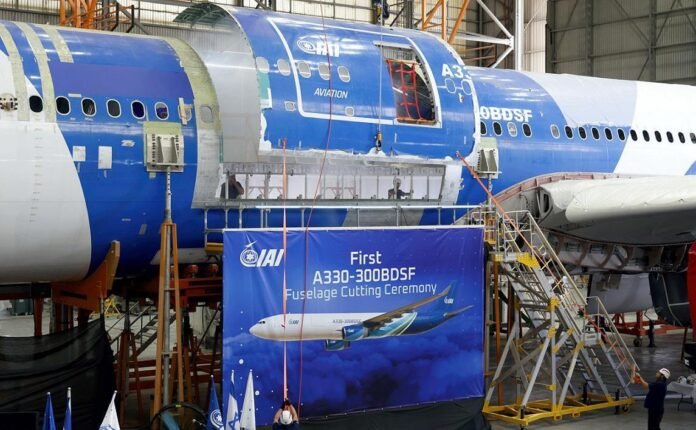Tel Aviv: Israel Aerospace Industries (IAI), has successfully completed a door cutting phase in its Airbus A330-300BDSF conversion programme – an important step in this cargo conversion programme.
The Airbus A330-300BDSF, is a next-generation, medium-size freighter converted by IAI, offering a competitive, cutting-edge solution for cargo operators seeking to expand and modernise their widebody fleets.
The converted aircraft will feature increased cargo volume, improved loading efficiency and reduced cargo operation turnaround time (TAT), due to the optimised location of its unique main cargo door. Additionally, the platform offers a range of advanced enhancements including multiple Powered Cargo Loading System (PCLS) configurations which maximise flexibility and efficiency during cargo operations as well as a modernised supernumerary area with a fully equipped wet galley and overhead bin, to provide comfort and support for onboard personnel during operations.
Boaz Levy, President and CEO of IAI, commented, “Completing the door cutting phase in our Airbus A330-300BDSF conversion programme marks a pivotal milestone in IAI’s mission to deliver next-generation freighter solutions to the global market. This achievement reflects our engineering excellence and reinforces IAI’s position as a world leader in passenger-to-freighter conversions.”
Yaacov Berkovitz, Executive VP and General Manager of IAI’s Aviation Group, stated, “Cutting the freighter door is a critical, and major milestone in the STC development process and significantly progresses the STC development program. The Airbus A330-300BDSF will provide cargo operators with a highly competitive aircraft that combines increased capacity, operational efficiency and advanced design to meet the evolving demands of modern air freight.”
IAI’s customers include many of the world’s largest companies: Amazon, Air Transport Services Group (ATSG), DHL, FedEx, Lockheed Martin, Boeing, Gulfstream and more.
-The writer is an Israel-based freelance journalist. The views expressed are of the writer and do not necessarily reflect the views of Raksha Anirveda





